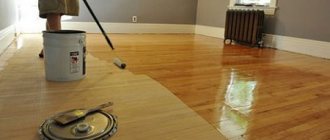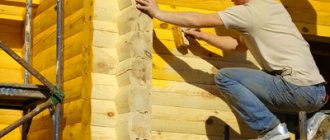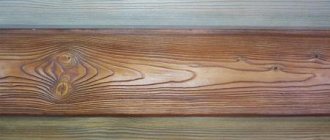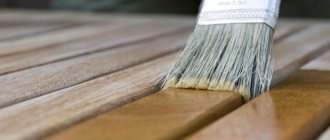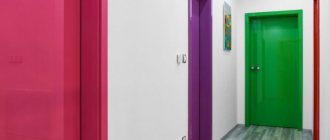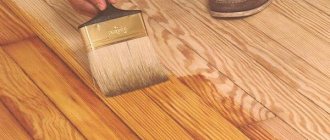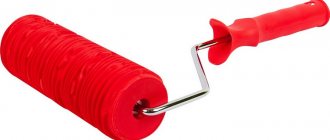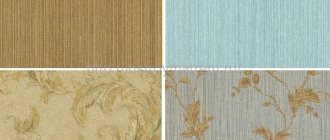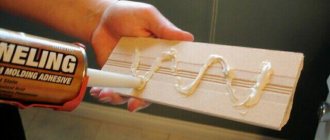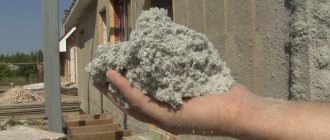Wood as the main material for creating flooring has always been in incredible demand. Processing methods, technologies and concepts for creating wooden flooring itself change, fashion trends alternate at lightning speed, but wood always remains a classic of respectable and cozy apartments.
American walnut parquet tinting
Tinting parquet to look like bleached oak
The unique natural pattern that flooring made from any type of wood has is universal and suitable for any type of interior. However, there is often a desire to change the tone, color or even texture of the flooring. Today there are many ways to change the color palette to your liking.
Whitewashed parquet
Brushing parquet
The relevance of wood tinting
Floor tinting is a change in tone or a radical change in the color of the canvas. Sometimes, using a tinting agent, it is possible to imitate the decorative qualities of a completely different type of finish using one type of material.
Beech parquet tinting
The popularity of this procedure is also due to the opportunity to save a lot of money.
For example, high-quality and inexpensive coniferous wood can be transformed into more expensive, respectable types of wood by changing its color and texture. Pine boards are considered the most convenient in terms of transformations for creating more expensive interior solutions - coverings made of bleached oak or exotic trees.
The tinting of parquet made of beech or more expensive wood species is also due to the characteristics of modern apartments. Apartments and houses are equipped with plastic windows, suspended ceilings, and other ultra-modern structures. In this case, the natural texture of wood is masked, creating a more urban interior composition with a futuristic concept.
Tinting parquet floors in the house
Tinting parquet boards
Colored oil
Colored oil is based on natural raw materials and is a combination of oil and wax. It is the most environmentally friendly product for tinting parquet. Parquet boards under oil become wear-resistant and acquire water-resistant and dirt-repellent properties. All colors can be mixed with each other, which gives almost unlimited possibilities in choosing the color of parquet tinting. Having decided to cover the parquet with oil, you must keep in mind that replacing it with varnish in the future will be largely impossible.
Lobadur ProColor is a professional composition for painting/staining parquet and solid boards followed by coating with water-based varnishes. All colors of the colorant can be mixed with each other; to obtain a lighter shade, use Lobadur ProColor colorless. It is recommended to use for tinting large-pore deciduous wood (oak, ash). When applying tinting to finely porous colored and coniferous wood, traces of sanding may clearly appear on the surface, as a result of which the surface may appear unevenly colored.
Scope of application
Do-it-yourself tinting of parquet flooring is a difficult task, but quite doable. Colors, stains, azures and other tinting will come to the rescue. These components are based on color pigments, which are capable of modifying the wood surface the way a person desires.
Oak parquet tinting
Shaped parquet tinting
In general, parquet tinting allows you to solve the following problems:
- Renew the appearance of old wood flooring;
- Change the color or texture of the floor in order to create a harmonious environment (with radical changes to the interior);
- Mask signs of “old age” or eliminate unexpectedly appeared defects (scratches, cracks, chips, heavy dirt);
- Improve the performance characteristics of the coating;
- Increase resistance to moisture;
- Give the flooring increased antistatic properties.
Parquet tinting with glaze
Tinting bent parquet
Tinting parquet floors in the living room
Not only tinting the parquet with oil, but also with other popular means will allow you to form a vapor-tight ball, which also has antifungal properties. The finishing layer makes the parquet resistant to mechanical damage.
How to tint a wooden floor?
Materials and stages of floor tinting
- Stain. This liquid, used to impregnate wood, allows you to change the color of the surface. ...
- Oil. The coloring agent penetrates well into the wood, thereby protecting it from abrasion and moisture penetration. ...
- Varnish.
Interesting materials:
How to get a dormitory at Moscow State University? How to get relic shards? How to get IP support? How to get six months of music from mts? How to get a premium pack in GTA 5? How to get premium in MTS? How to get RDR 2 for free? How to get Red Dead Redemption 2 for free? How to get the symbol of greed? How to get a starter kit in Mine?
Main types of tints
The shade will largely depend on the smoothness of the wood that will be processed. For example, a very rough floor with a lot of roughness is characterized by its ability to absorb pigments more intensively. This means that the final shade will be much richer and deeper than a similar smooth canvas.
Parquet tinting
Parquet tinting is carried out using the following tinting agents:
- Transparent or glazing agents. With their help, beautiful wood patterns and natural textures are made clearer and more noticeable. This occurs by slightly changing the shade;
- Whitening components. Solutions lighten wood, increasing its strength characteristics. This effect can be achieved using unique substances that are not oxygen compounds. Chlorine and similar products have been abandoned a long time ago;
- Solutions for staining. Tinting products are used to radically change the color, making the shade deeper and more saturated. The color palette has a special range (from warm caramel and honey shades to intense tones of chocolate, wenge, mahogany).
To ensure that the final result does not disappoint and completely ruin the parquet, it is important to take into account the type and structure of the wood and choose the right tinting agent. It is also important to observe all the necessary nuances when working with the material.
Tinting parquet floors in the kitchen
Modern trends in choosing colors for parquet
Thanks to modern wood coloring technologies, various colors and shades can be brought to life. Traditional colors for tinting parquet are: yellow shades, dark brown, red, amber. For bolder solutions, white, black, bright and rich colors are suitable.
Important . As a rule, painted samples are presented in stores. When making a choice, it is advisable to have an image of the interior with you in order to compare it with the tone of the floor.
Floor coverings in light colors are always in fashion as they can be easily combined with different stylistic trends in the interior. A white floor helps to visually increase the space; it also looks beneficial from a practicality point of view; dust and minor damage are less noticeable on such a surface.
Dark shades must be chosen with extreme caution - they are not suitable for all rooms. Dark floors go well with light walls. From practicality, it is worth highlighting that the dark shade helps to hide defects in the old flooring. Black floors and chocolate shades have proven themselves in the design of modern style trends such as minimalism and constructivism.
Gray and beige shades will fill the room with comfort and tranquility. These colors are used in Provence, country, and neoclassicism styles. Pastel colors are great for bedrooms and children's rooms.
Red shades add sophistication to the room, recommended for living rooms in a classic style. Red color is very difficult to combine with other shades, which makes it difficult to choose additional interior elements: furniture, doors, wall decoration.
The brown shade emphasizes the naturalness and structure of the wooden floor. The color brown is perceived as a symbol of protection and shelter from adversity.
Types of tinting compositions
The range of products for changing the color of flooring made from any type of wood is quite wide. Formulations can be divided into five global categories:
- Colored primers;
- Finishing oil;
- Colored glaze;
- Coloring paste;
- Colored varnish for parquet.
Each product is unique in its own way and contains several more subtypes of products. Let's look at each option in more detail.
Varnishing parquet
Colored primers for parquet boards
Colored primers are usually in oil form. The base is soybean, sunflower or linseed oil. To ensure that specific products dry faster, the formulations are enriched with siccates and other purely technical components.
Oil tinting of parquet
The most popular tints:
- Wax compositions based on natural ingredients. Using decorative wax, beech or oak parquet can be tinted quickly, enhancing the already excellent characteristics of the flooring. The shade changes, the wood becomes stronger, more resistant to dampness, static, and various types of damage. Wax does not seal the natural pores of wood. This type of finishing can be considered extremely natural and environmentally friendly. Wood retains its exclusive ability to create a special microclimate in the house;
- Stains are tinting compounds with a large number of components. The base is drying oil or sunflower oil. There are stains based on water, alcohol, substances similar to gasoline or polyester solvents. The great advantage of such products is the presence of all possible “protectors” that will protect the wood from chemical and biological attacks. In form, stains can be in the form of a dry suspension, as concentrated solutions or mixtures, ready for use without prior preparation.
Primer compositions are characterized by different density values, which determine the degree of convenience in working with the substance. The liquid solution is applied with a spray gun; other forms of compositions are best applied with a brush or even a staple.
Modular parquet tinting
Colored finishing oil
The traditional base is soybean, flax, sunflower or thistle oil. The composition is enriched with a whole range of various additives:
- Wax and paraffin particles;
- Driers;
- Polymers that promote rapid film formation;
- Polysiloxanes;
- Solvents.
You can treat wooden surfaces and cork. Specialists can create both matte and shiny surfaces. Oil can penetrate extremely deep into the finishing material. To apply the finishing oil, use applicators with a special attachment, rollers or brushes.
Walnut parquet tinting
Colored glaze
The glaze consists of oil, driers, thickeners and antioxidants. Hard and soft wood is treated with this product.
Parquet tinting with paste
Using only one glaze is considered impractical, since glazed surfaces are extremely sensitive to all kinds of mechanical damage. It is better to combine glaze with oil compositions. Tinting parquet with varnish in combination with a finishing layer of glaze is not practiced. Unless we are talking about working with furniture and decoration that is not subject to mechanical stress.
The glaze is applied using the rubbing principle. Use a hard brush. Sometimes they resort to using a Scot-Brite or a spatula.
Aging of parquet
Parquet varnish
To change the color of parquet or any wooden surface, polyester or polymer-based varnishes are used. There are alternative options using drying oil. Solvent-based varnishes can “bake” wood.
Parquet tinting
Traditional shades are a honey palette and amber notes. To achieve a brighter extraordinary color, the composition is enriched with certain pigment particles. For example, super-strong white pigments are used for whitening.
Parquet tinting with wax
Tinting pastes
In special cases, primers and oils do not cope with the assigned tasks. The color is not as saturated as we would like, or the texture is not standard. Pigment colors can correct the situation. The desired shade is selected using “dyes”, and the pigments themselves are added gradually, creating the desired tone with one’s own hands.
White tinting of parquet floors
Whatever the final choice of tone and means for changing the color of a wooden surface, you need to purchase only those products whose quality is beyond doubt. Too little knowledge or lack of confidence in one’s own abilities is a very serious reason to turn to professionals who will do the job in detail. After all, the main goal in home improvement is not saving money, but a harmonious environment and comfort.
Parquet whitening method
One type of parquet tinting using white pigments is called parquet bleaching. This method is best carried out on traditional types of wood such as oak, maple, beech, pine, larch . Of the listed species, oak and ash lend themselves well to color changes, while beech and maple are a more difficult task.
Rules for successful bleaching include:
- Preparing wood using a parquet sander.
- The correctness of the selected parquet colorants, varnishes and oils. It is worth emphasizing that not all colorants are suitable for parquet varnish.
- Application of the composition using a brush, roller, spatula and single-disc machine with pad.
- Comply with the drying time indicated on the packaging.
If all points are followed, parquet whitening will be performed smoothly and with excellent results.
Parquet whitening technology
The tinting composition should be applied in stages with the gradual addition of white tones until the desired color is achieved. You should definitely do a preliminary painting on a separate sample or on a small area of parquet in order to determine how the pigment applies and how many layers are needed.
To begin with, the parquet is scraped. Next, carefully remove dust from the surface using a vacuum cleaner. Then a special wood bleach is applied to the floor surface for 10-14 hours. If there are cracks, gaps or gaps on the parquet, they should be filled with putty (a mixture of wood dust, bleach and binder, for example LobaDur Fugenkitt losung ). After time, the surface is ground, giving the surface smoothness. Finally, varnish the parquet.
White wood stain
This substance is recommended for gentle lightening of floors. Unfortunately, it does not create a protective layer on the surface and requires additional application of varnish on top. This stain is applied with a brush or cotton cloth. After about 4 hours, the floor should be lightly sanded with sandpaper, then cleaned of dust and applied varnish. After the first layer of varnish has dried, you can apply a second one.
Quick-drying varnish for wood
If you want to get a durable and impenetrable coating in the shortest possible time, you can use a quick-drying varnish. It can be applied with a flat or oval brush, or with a roller. It is recommended to apply 2 layers with an interval of 6 hours. To get the best effect, sand the first coat with sandpaper, then remove the dust, wipe with a damp cloth and, after drying, paint again.
